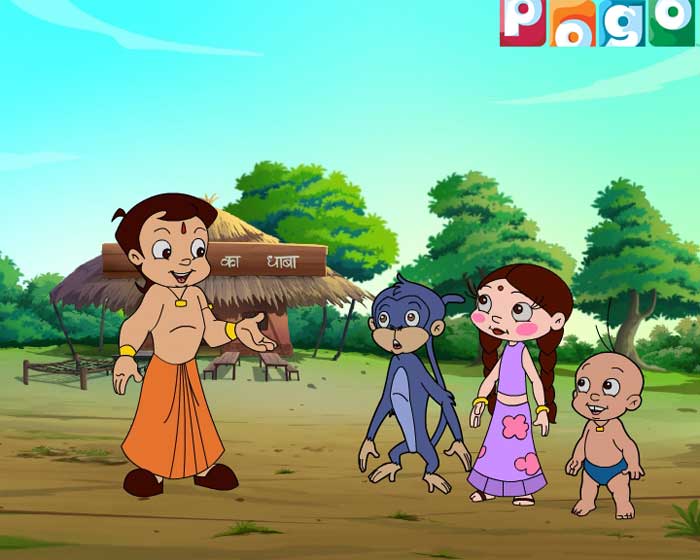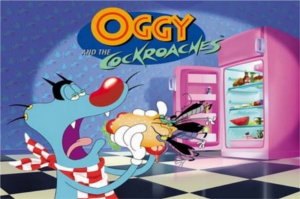The television industry in India got its very first dose of kiddie laughter way back in 1995, when Turner International brought its mainstay Cartoon Network to Indian shores. And since then the network has grown from strength to strength; not only expanding its reach across the country but also introducing a channel which has a local flavour to it with Pogo in 2004.
The kids’ genre which is currently pegged to be nearly Rs 350 crore in revenues is largely ruled by both the Turner siblings over the years. Now Pogo is in its tenth year already and with the elder sibling soon turning 20 next year, what’s happening with the network one may ask?
Well, AnimationXpress.com’s Sidharth Iyer recently caught up with Turner International India, executive director & network head – south Asia, Krishna Desai and got the honcho to spill the beans on turning ten at Turner, the core brand proposition of both CN and Pogo, importance of home grown IPs and much more.
Excerpts:-
How has your journey with Turner International India been?
 It’s been really fantastic, that’s why I am still here. Cartoon Network was already a leader in the space when I initially came onboard and Pogo was the additional channel that we launched soon after I joined Turner. Now, both Pogo and I are in the 10th year here; with both the channels doing really well and remaining among the top three channels still in the space, so it’s a great feeling.
It’s been really fantastic, that’s why I am still here. Cartoon Network was already a leader in the space when I initially came onboard and Pogo was the additional channel that we launched soon after I joined Turner. Now, both Pogo and I are in the 10th year here; with both the channels doing really well and remaining among the top three channels still in the space, so it’s a great feeling.
What is the core strategy that you follow to constantly lead in the kids’ genre?
There are majorly three levels of the brand proposition that we follow: One being, what is the core deliverable for the kids; second being, what the channel stands for and, third and most important is what kids think of the brand, whether they build a connect with it or not.
So starting with the third one, which is the most important. We try our level best to engage kids with the brand, characters and shows and for this we make sure that our positioning is right, in terms of what we do. While TAM gives us ratings input at a minute by minute level, we still need to ask the kids on what they want from us, that’s more important. Second point is how we have positioned the brand itself.
There are many common things about both the channels – brands, the target audience is the same, but Cartoon Network happens to be more boys skewed, whereas Pogo is more inclusive in nature. It was always in our control whether we want Pogo to be a girl’s channel, boy’s channel or both, so we wanted it to be more inclusive in its content and the ratings reflect that every day. The other common thing is both focus on complete entertainment, and there is no promotion of educational content as such. One difference between Cartoon Network and Pogo is that, CN makes you laugh out loud, whereas Pogo on the other hand puts a smile on your face; CN is the naughtier and more edgy of the two, and throws unexpected things at you.
Consumption of genres by the kids has also evolved; five years ago kids used to love action adventure a lot, but nowadays kids prefer humour and we ensure to adapt to changing trends and mindsets.
The last point that I would like to stress on, is formats. You have both long format and short format, which is available on both the channels; but Pogo is more format agnostic, we produce many live-action tele features as well, and carrying out various innovations like the recent collaboration between ‘Chhota Bheem’ and Salman Khan’s ‘Kick’ that you saw on our channel it’s more of a Pogo thing. It is more local at heart though we don’t differentiate from the kids point of view, but certainly do so from a business standpoint, the fact remains that Pogo is more local in nature.
How important is it from your perspective to have a lot more home grown IPs?
Home grown IPs is a natural evolution in itself for content development. We are a part of the animation industry, a space which is still very young in India being just two to three decades old. In every developed market you will have home grown content; the Indian market is still in the teenage phase right now. But, I would certainly say that we have leapfrogged many things and tried to help the industry by encouraging a lot of home grown content on both our brands.

And just stressing a bit more on making content more locally appealing, if your audience is local then you have to resonate with them, even if you have to dub content in Hindi and other languages as well, or you ‘transcreate’ things or re-write things and see how one can fit international shows into the local market, but this is all from the business point of view. Kids love Ben 10, Tom and Jerry, Chhota Bheem, etc equally and don’t differentiate whether they are local or international shows; they adore them irrespective of their origin.
But these are initial steps, one has to work with the industry and other studios to see how one can develop our own characters or shows. The idea is to work with them, invest a little bit with them and see what comes out of it.
Where do you feel Indian animation is lagging behind?
I don’t feel there is lack of talent, technology or skill in India at all, what we have learned over the several years is to put everything together in a proper streamlined manner. If there are processes set in place, things will become much easier.
Personally I feel one thing in which we really lack is writing for animation; definitely it’s far better than what it was five years back, but still there is lot to do. We are yet to achieve the level of finesse an artist from a developed animation market possesses, but we are in the processes of getting there. The issue is with our economic model, which is really the elephant in the room if I may say so. For local IPs to thrive you need a local market which will pay you back that much, which is the case in more developed markets.
Today, we have 62 million measured kids in India. However, historical benchmarks of the advertising genre are kept so low that even with 7% – 8% of share offered by the kids genre, we only manage 2% – 3% revenues in return, this gap is very huge. And due to this historic tradition, we continue to be an under monetised market to say the least.
What do you attribute to the success of ‘Oggy and the Cockroaches’?
 It’s not that Oggy is doing right and some other shows are doing something wrong. Pokemon years ago was the flavour of that season, Ben10 is a huge hit, Chhota Bheem is and will, hopefully, always be everyone’s favourite. Other shows from competing channels also are doing well, so this is a great time for the kids’ genre. One thing we all have in common is the ability to engage kids and make them laugh.
It’s not that Oggy is doing right and some other shows are doing something wrong. Pokemon years ago was the flavour of that season, Ben10 is a huge hit, Chhota Bheem is and will, hopefully, always be everyone’s favourite. Other shows from competing channels also are doing well, so this is a great time for the kids’ genre. One thing we all have in common is the ability to engage kids and make them laugh.
Today it’s Oggy few weeks later it can be some other show. If you look at all these shows, specially the top five, the popularity margin is not much. The flavour of the season depends completely on kids, it can be for weeks or couple of years or decades as well; no one can really predict it.
Taking all that into consideration, do you feel there is space for another kids channel in the genre?
Of course there is plenty of room, but it also depends on what kind of content you are providing to the kids, there has to be right offer and positioning for the kids. Also depends on how different you are from other channels. Are you bringing in humour that is superior or at par, do you have high volume of fresh content supporting that as well, and a good distribution strategy.
There is always space for new players, and that would also encourage the current players to be on their toes and have a good content pipeline, and really help grow the category overall.
There would be fragmentation, if they offer overlapping content, but then competition is always better and not just for kids per say but for any category in general.
